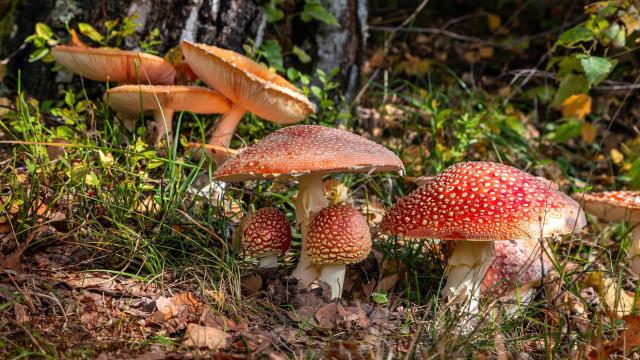Have you noticed the world getting a little more obsessed with mushrooms lately? Maybe you steer clear of wild mushrooms entirely because you don’t have a clue what’s delectable, what’s psychedelic, and what’s deadly — but it’s not a bad idea to start studying up on the mushrooms around you. The following resources can help anyone get more familiar with the characteristics — and relative danger — of your local fungi friends.
The best mushroom identification apps
- ShroomID: The coolest mushroom apps, like ShroomID, can help you identify fungi based on your uploaded snapshots. You can also ID mushrooms on the app by selecting characteristics. It includes a mushroom encyclopaedia and allows you to connect with other users to discuss your finds. (Available for Android and Apple.)
- Picture Mushroom: This app also uses your pics to identify mushrooms, giving a list of possible matches and warnings for poisonous varieties. You can save your fungi finds in your own collection on the app. You’ll find articles about mushrooms and a mushroom encyclopaedia. You can also use the app to talk about mushrooms with mycologists. (Available for Android and Apple.)
- Mushroom Identify — Automatic: This is another option that allows you to take a pic in the wild and let the app identify the mushroom for you. It includes more than 900 species and lists look-alikes to help you get the most accurate ID. Use the app to quiz yourself on mycology trivia, add your foraging finds to your personal map, or check the calendar to see what mushroom types you’re most likely to encounter. (Available for Android.)
- Shroomify: Instead of analysing your photos, Shroomify helps you identify mushrooms by selecting characteristics like body type and gill formation. Another cool feature: a monthly Top 20 list of mushrooms you are most likely to find at that time of year. (Available for Android and Apple.)
- Mushroom LITE — Field Guide: This app includes 300+ species of mushroom. Again, you select characteristics to identify what you’ve found. Cool features include a mushroom quiz and offline mode (because you’re not always getting the best reception in the forest). (Available for Apple.)
- Book of Mushrooms: Contains 254 species of mushroom, and tells you if they are edible, inedible, or poisonous. Much like a simple printed field guide, you identify mushrooms based on pics and descriptions listed in the app. It also tells you which months you are likely to find each species. (Available for Android.)
Handy mushroom-identification links
Basics of Wild Harvested Mushroom Identification is an FDA publication by Dennis E. Desjardin, a mycology professor at San Francisco State University. As promised, Desjardin describes the basics of how to begin distinguishing between different mushroom species by observing:
- Body form (learn to distinguish corals from morels and boletes from polypores)
- Cap features like size, colour, and shape
- Gill or pore features
- Stipe (stem) features
The North American Mycological Association is your resource for finding local mushroom hunting clubs. You can also track down local experts to help with identification in cases of suspected poisoning.
The best mushroom field guides
- Mushrooms Demystified: Don’t be spooked by the vintage nature of this field guide. It may be from 1986, but have mushrooms really changed that much in the last 30 years? At over 1,000 pages, this is a chonky book — something to consider when you’re tromping through the woods. The heft may be worth it though, considering it covers more than 2,000 species with 950 photos, highlighting the 70 most distinctive and common types. Amazon calls it “the be-all and end-all of mushroom books!”
- National Audubon Society Field Guide to North American Mushrooms: Another vintage selection (from 1981), this 900+ page book includes more than 700 species and photos. Another cool feature is its detailed content on edibility, uses, and folklore of each mushroom type. If it ain’t broke, don’t fix it.
- National Audubon Society Mushrooms of North America: This is not really an update to the previous volume, but a whole new guide. The National Audubon Society just released this guide in 2023, if you are into the newest of new reference sources. At 720 pages, it includes 2,900 colour photos of 668 mushrooms species in North America. A common reviewer criticism is that it does not contain edibility, uses, and folklore like the National Audubon’s 1981 book. This may be good choice for identification and scientific characteristics, but you won’t get the juicy details about how people use the mushrooms in real life.
More than 10,000 species of mushrooms have been identified, and that’s likely a fraction of what’s really out there. Many are very similar in appearance, but the resources above can help you narrow what you find to a few types. While only about 3% of known mushroom species are poisonous, the baddest baddies can be deadly. Don’t depend on an app to 100% determine the safety of consuming or handling any mushrooms: Before you sample your finds, hook up with an experienced forager or mycologist to learn more.

Leave a Reply
You must be logged in to post a comment.